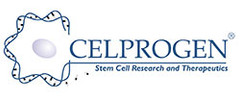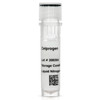Product Description
Pancreatic Lipase 100 units
Pancreatic lipase is an enzyme (more specifically, a lipase ) secreted from the pancreas that uses hydrolysis to break apart fat molecules. This protein belongs to pancreatic lipase family. Unlike some pancreatic enzymes like trypsin which are first secreted in the inactive form (e.g. trypsinogen ), pancreatic lipase is secreted as the active enzyme.
Lipase is a water soluble enzyme which catalyses the ester bond hydrolysis in fats to produce monoglycerides,diglycerides, free fatty acids and glycerol . Available as 500 units, 100 units and 1mg sizes.
Source: Human Pancreas
Extinction coefficient: = 13.3 (Desnuelle 1972)
Isoelectric point: Lipase A= 4.9 (Brockerhoff and Jensen 1974) and Lipase B=5.0
Activity:
See Desnuelle (1972) on "Catalytic Properties" (page 586). Momsen and Brockman (1976a and b) report the effects of taurodeoxycholate and co-lipase. At low concentrations, up to 0.3mM, the bile salt increases the stability of the lipase to 5 fold. At higher levels (0.3-0.8mM), but below the critical micelle concentration, it interferes with enzyme
UNIT DEFINITION: One unit will catalyze the hydrolysis of one micromole per minute of 1,2-o-dilauryl-rac-glycero-3-glutaric acid-(6-methylresorufin) ester in the presence of co-lipase, bile salt, and calcium chloride at 370C.
Molecular weight: 45,000-50,000 (Verger et al 1969)
Publication
The Role of CXCR3/Ligand Axis in Cancer
Biomolecular Characterization of Exosomes Released from CSC
Dietary Bioflavonoid Quercetin Synergizes
Increased Chemosensitivity via Targeting Testicular Nuclear Receptor 4
New Therapy Targeting Differential Androgen Receptor Signaling in Prostate CSC
NVP-LDE-225 (Erismodegib) Inhibits Epithelial-Mesenchymal Transition
Rottlerin Induces Autophagy and Apoptosis in Prostate CSC
Synthetic Lethality as a Targeted Approach to Advanced Prostate
TR4 Nuclear Receptor Alters the Prostate Cancer CD133+ Stem. Progenitor Cell
Triphala Extract Suppresses Proliferation and Induces Apoptosis








